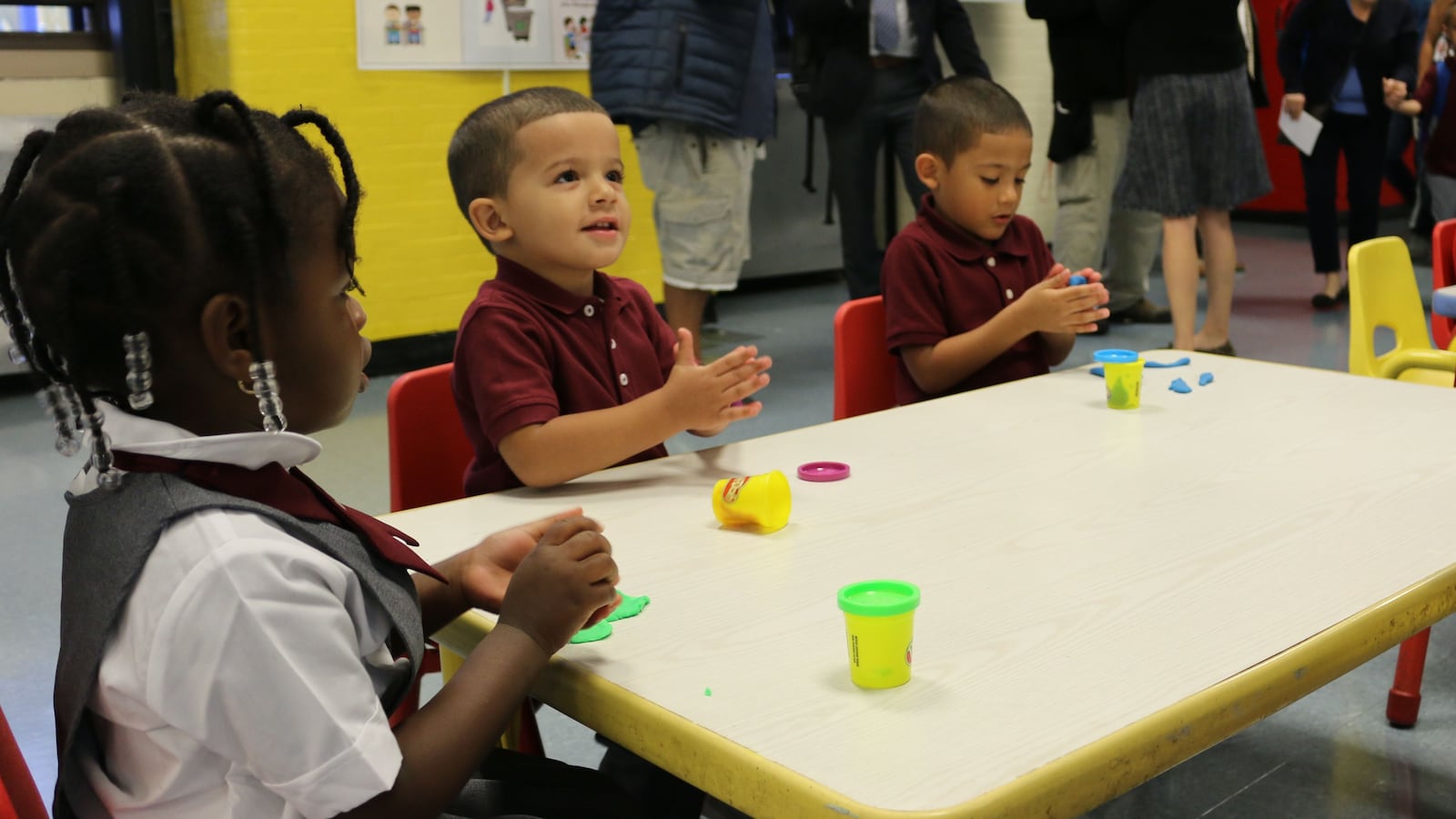Following criticism that its lead paint protocols were not strong enough, New York City’s education department announced Thursday that testing for the toxin will now be done in school common areas.
The announcement came as officials revealed that about 900 more classrooms were found to need remediation for peeling or deteriorated lead paint this summer — about double the number revealed last month after an initial round of inspections the week of June 24.
The new numbers reflect lead testing done for the first time in first-grade classrooms, in addition to the thousands of 3K, pre-K, kindergarten, and District 75 special education rooms, and LYFE centers for children of students. These inspections for lead hazards took place while school was out in buildings constructed before 1985.
Inspections done in July and August also include rooms that weren’t previously on a custodian’s radar, such as a 4th grade room that will now be used for kindergartners, a department spokeswoman said.
Of the 8,428 classrooms that were inspected this summer, a total 1,858 needed remediation, which involves hiring a contractor to seal peeling paint and then paint over it. The education department has promised classrooms will be fixed by the start of school next week. All have been remediated, and about 75 of those are awaiting a dust wipe test for remaining lead, according to a department spokeswoman.
Remediating a room usually involves covering walls and floors with plastic, and ensuring contractors have enough properly trained workers on the job, said Tom Neltner, a lead paint expert at the Environmental Defense Fund, who has conducted trainings for inspectors and contractors tasked with cleaning up deteriorating paint.
“It’s possible, but it’s a real undertaking,” Neltner said of remediating the roughly 1,800 classrooms over the summer. “I’m just glad to see they’re taking it on.”
Principals were notified Thursday of the new results, and affected families would be made aware on the first day of school. After the first round of results were released, before letters were sent out, some families reported feeling in the dark about the news or what to do next.
School leaders in buildings found to have lead will receive a list of classrooms that are cleared for children under the age of 6, a department spokeswoman said. By the end of September, principals will be required to tell the department which classrooms they will be using, since “over-the-counter” school registrations are ongoing and could require schools to open new sections of a grade.
The numbers released Thursday, coupled with data the education department released last month, came in the wake of a WNYC investigation that found hazardous levels of the toxin in four schools and raised concerns about how officials inspect buildings.
While this is the first time the education department has made inspection information publicly available, officials assert that testing protocols have been in place for years. School custodians in older buildings are supposed to look for peeling paint in classrooms with children younger than 6 – considered the most at risk for ingesting lead paint in the form of chips or dust. If deteriorating paint is found, inspectors are brought in to test for lead, and if positive, the paint is remediated.
Experts in environmental health recently told Chalkbeat that the department appears to be following federal law, but protocol could be more robust to match Mayor Bill de Blasio’s “vision zero” effort on eliminating childhood lead exposure by 2029 — including testing common areas, such as hallways, gyms, and auditoriums; X-ray scanning all rooms for lead even before paint starts to chip, and checking for lead dust before remediation is complete.
With last month’s release of inspection data, the education department said it will require custodians to check classrooms at three points during the year, and the department will update information about inspection results online after those sweeps.
Amid pressure this month from City Council Speaker Corey Johnson and Education Committee Chairman Mark Treyger, the department said it will now test common areas but did not say more Thursday about when and how that will take place.
“I certainly welcome this reversal, but our job is not over,” said Councilman Mark Treyger, who also wants the education department to test for lead dust before remediation is over, and to communicate with principals about inspection results.
A spokeswoman for the mayor’s office, Jane Meyer, said that until now, the city’s “primary focus has always been on where kids spend the most time – classrooms. As part of our recent efforts to achieve vision zero for lead in New York City, we will enhance our protocols around common space with new inspections, testing, and remediation guidelines.” This, Meyer said, is in addition to the lead abatement that goes on when schools undergo capital projects. She said the city would soon elaborate on the revised protocols.
New York City has also ordered an audit from firm Ernst & Young to review its lead protocols. The audit is expected to be completed by the end of the school year.
Sam Park contributed data analysis for this story.
Below is a database of which classrooms tested positive and negative for lead, and whether they were remediated.

